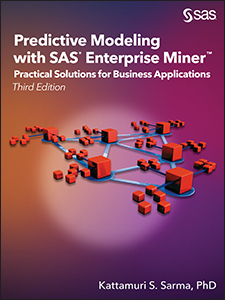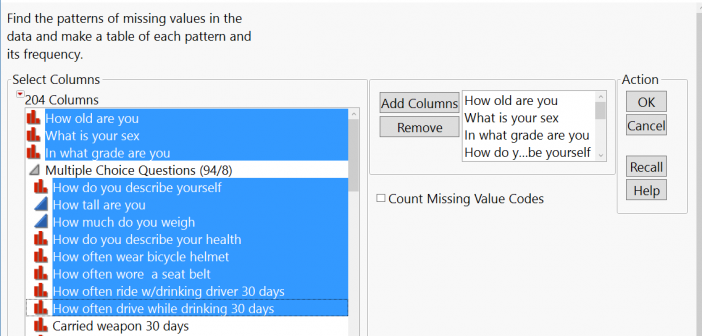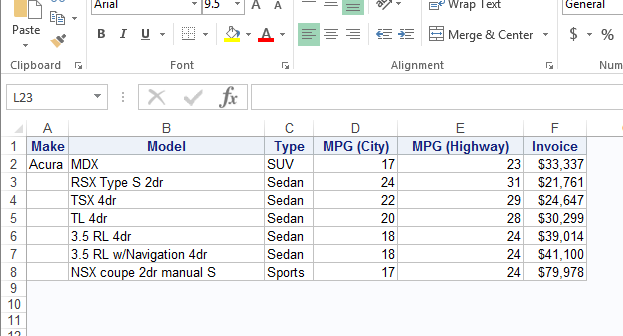Here's a Proc Print trick for grouped data. Suppose your data is divided into groups, such as males and females. You could sort by the grouping variable before printing, like this: Suppose you want to better emphasize the groups. You could add a BY statement, like this: OK, but, personally,
Tag: tips and tricks

A ghoulish Halloween Boo to all my readers! Hope my costume freaks you out, but even if it doesn't, I’m positive PROC FREQ will in a few amazing ways! Today’s Programming 2: Data Manipulation Techniques class asked about the power of PROC FREQ. Since I stopped to explain some of it's benefits to

Suppose you want a list of car manufacturers from the CARS dataset. Easy! Call the %CHARLIST macro from a %PUT statement, like this: The CHARLIST macro generates a list of unique values of a selected variable from a selected dataset. So does PROC FREQ. But, if you don't need statistics, the CHARLIST
Would you like to format your macro variables? Easy! Just use the %FORMAT function, like this: What?! You never heard of the %FORMAT function? Of course not, cuz it doesn't exist! No problem. Just create it, like this: %macro format(value,format); %if %datatyp(&value)=CHAR %then %sysfunc(putc(&value,&format)); %else %left(%qsysfunc(putn(&value,&format))); %mend format; The %FORMAT

In this post I describe the important tasks of data preparation, exploration and binning.These three steps enable you to know your data well and build accurate predictive models. First you need to clean your data. Cleaning includes eliminating variables which have uneven spread across the target variable. I give an

Datasets are rarely ready for analysis, and one of the most prevalent problems is missing data. This post is the first in a short series focusing on how to think about missingness, how JMP13 can help us determine the scope of missing data in a given table, and how to

Elizabeth is courageous. Scoliosis since birth, corrective spinal surgery replaced her spine with steel, tripping on stairs permanently broke her right ankle. Then she decided to come take yoga with me. To help ease back pain & reduce hip stress, I offered options like bent legs not cross. In class

When developing SAS® data sets, program code and/or applications, efficiency is not always given the attention it deserves, particularly in the early phases of development. Since data sizes and system performance can affect a program and/or an application’s behavior, SAS users may want to access information about a data set’s

Ok, so you know how to create multiple sheets in Excel, but can anyone tell me how to control the name of the sheets when they are all created at once? In the ODS destination for Excel, the suboption SHEET_INTERVAL is set to TABLE by default. So what does that

SAS® users have an easy and convenient way to quickly obtain useful information (referred to as metadata) about their SAS session with a number of read-only SAS DICTIONARY tables or SASHELP views. At any time during a SAS session, information about currently defined system options, libnames, tables, columns and their





